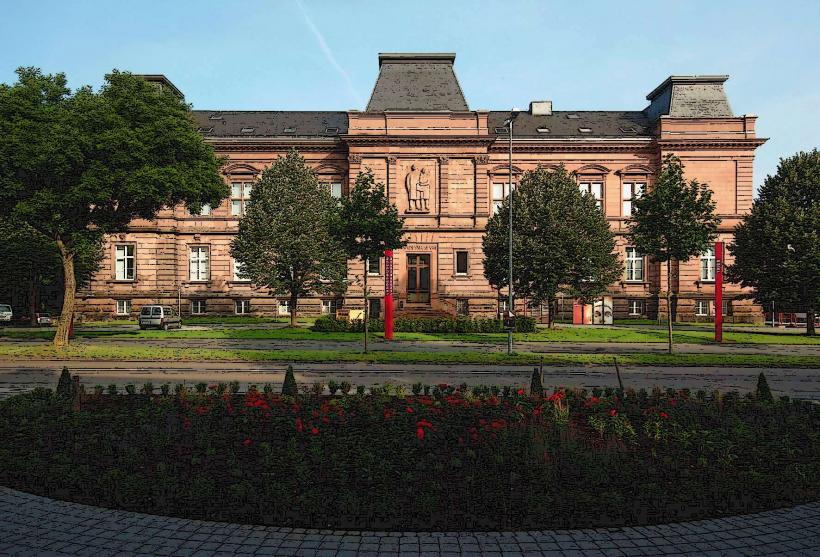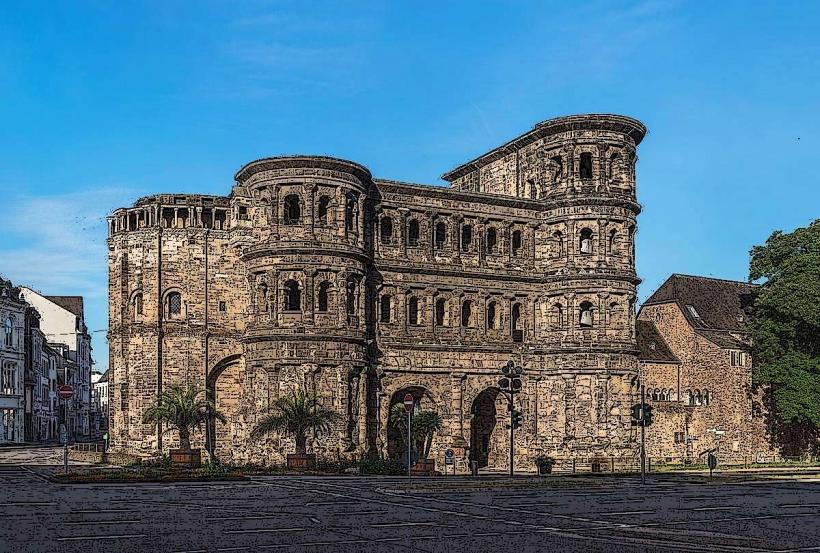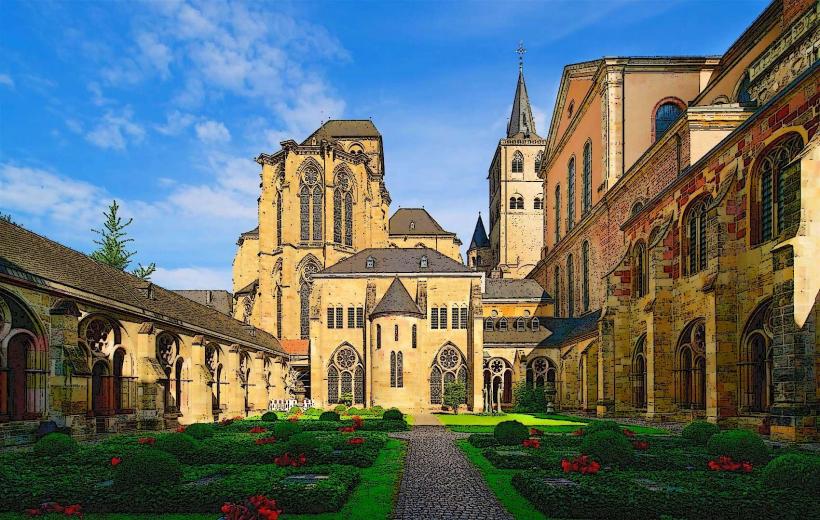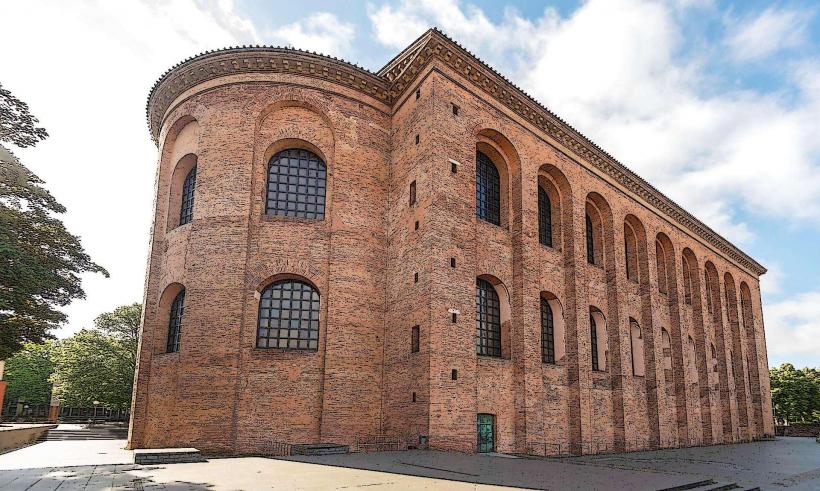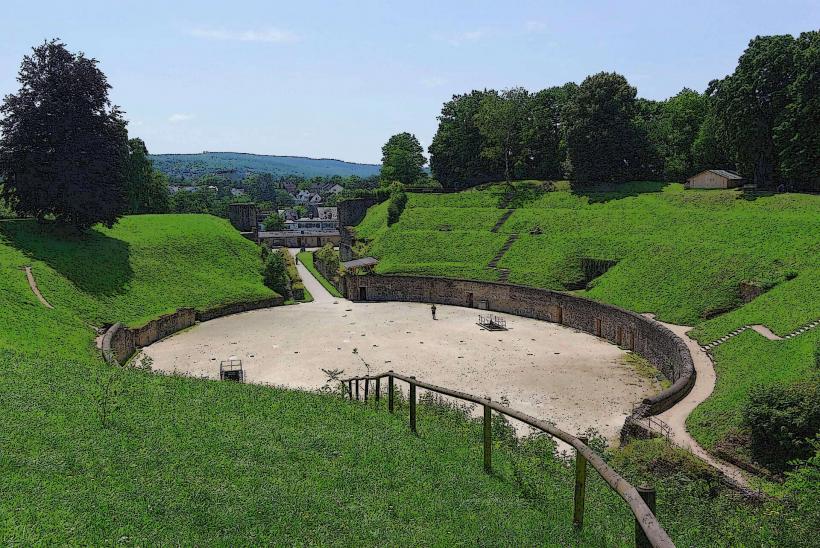Information
Landmark: Karl Marx HouseCity: Trier
Country: Germany
Continent: Europe
The Karl Marx House (or Karl-Marx-Haus) is a significant historical landmark in Trier, Germany, where the philosopher and economist Karl Marx was born in 1818. It is now a museum dedicated to his life, work, and enduring influence on global political thought. The museum is located in the city center of Trier, a city rich in history and known for its Roman heritage, but the Karl Marx House offers a unique insight into Marx's early life and his intellectual development.
Key Features of the Karl Marx House
Historical Significance
- The Karl Marx House is located at Brückengasse 10 in Trier, where Marx was born on May 5, 1818. The house is an important landmark for those interested in Marxist philosophy and political theory.
- The house was once the residence of Marx’s family. After his birth, the family lived in this townhouse for several years before moving to other locations. The house remained a private residence for many years before being transformed into a museum.
- The museum commemorates Marx’s early years in Trier, before he became the revolutionary figure he is known as today. It focuses on his upbringing, education, and the formative influences that shaped his revolutionary ideas.
The Museum
- The Karl Marx House was opened as a museum in 1956, during the period of the Cold War, reflecting the growing global interest in Marxism and socialism, especially in Eastern Bloc countries. The museum was refurbished in the 1990s and offers a modern, interactive exhibition.
- The museum is housed in the original building where Marx was born and features displays about his early life, his family, and his education. The permanent exhibition covers the major stages of his intellectual development, including his studies in philosophy, political economics, and his works that laid the foundation for modern socialism and communism.
- The exhibits are presented through a combination of historical artifacts, documents, and multimedia displays. Visitors can learn about Marx’s ideas, including theories of class struggle, capitalism, and historical materialism, as well as his most famous work, the Communist Manifesto (written with Friedrich Engels) and Das Kapital.
The Birthplace and Personal Life
- The museum emphasizes not only Marx's revolutionary ideas but also his early years in Trier. Marx’s family background and early education are explored in detail. His father, a lawyer, was well-integrated into Trier’s social fabric, and the Marx family had a comfortable middle-class life before Karl Marx left the city for university studies.
- Visitors can see reproductions of the room where Marx was born, offering a glimpse into the environment that shaped his early experiences.
Exhibition Highlights
- Early Life: The museum displays items related to Marx’s family, his early schooling, and his move to Bonn and Berlin for higher education.
- Major Works: A significant portion of the museum focuses on Marx's major philosophical and economic writings. This includes the Communist Manifesto, Das Kapital, and his numerous essays and political works.
- Theoretical Contributions: The museum outlines the core ideas of Marxism, including the theory of class struggle, the critique of capitalism, and the concept of historical materialism, which suggests that material conditions primarily shape human society and history.
- Political Impact: The museum also explores how Marx’s ideas influenced the Russian Revolution, the development of communist states, and socialist movements around the world.
The Museum’s Architecture
- The Karl Marx House is a historic townhouse typical of 18th-century Trier architecture, characterized by its baroque style. The museum has preserved many of its original features, such as the exterior façade and rooms that evoke the atmosphere of the early 19th century.
- The modern exhibition rooms are designed to complement the historic house, providing a contemporary space for visitors to engage with the history and ideas of Karl Marx. The museum's design effectively balances historical preservation with modern presentation techniques.
Karl Marx Statue
- A large bronze statue of Karl Marx stands in Trier’s central square (Marktplatz), just a short walk from the Karl Marx House. The statue was erected in Karl Marx's hometown in 2018, to commemorate the 200th anniversary of his birth. This is a major attraction for visitors, many of whom come to Trier specifically to honor Marx’s legacy.
- The statue is a significant public monument that symbolizes Marx’s influence on political thought, especially in the context of the historical communist movements and the legacy of socialism in the 20th century.
Karl Marx’s Later Years and Legacy
- While the museum focuses on his early years in Trier, there are sections that address Marx’s later life, including his time in Paris, Brussels, and London. It explores his relationship with Engels, their collaboration on various works, and Marx’s role in developing socialist theory that profoundly influenced modern political ideologies.
- The museum also provides insight into the global legacy of Marx's ideas, especially how they inspired revolutionary movements, socialist policies, and even the formation of Marxist-Leninist states in the 20th century.
Visitor Experience
- The Karl Marx House is a museum that offers a rich, educational experience, suitable for visitors of all backgrounds, whether they are interested in philosophy, economics, history, or politics.
- The museum is family-friendly and offers various educational resources and activities for children and younger audiences.
- Guided tours are available for those who want a deeper understanding of Marx’s life and ideas. The museum also hosts temporary exhibitions that focus on different aspects of Marxist thought and political history.
Accessibility
- The Karl Marx House is located in the center of Trier, making it easily accessible by foot from other major landmarks in the city, such as the Porta Nigra and Trier Cathedral.
- The museum is accessible to visitors with disabilities, and there are facilities for easy navigation throughout the building.
Conclusion
The Karl Marx House in Trier is a vital destination for anyone interested in the life and ideas of Karl Marx. It offers visitors a comprehensive look at his early years, the development of his revolutionary ideas, and the significant influence of those ideas on modern political thought and history. Whether you’re a scholar of Marxism or simply curious about the man behind the Communist Manifesto, the museum provides a fascinating and thought-provoking experience in the heart of the city where Karl Marx was born.

